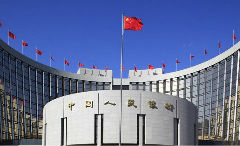China to keep reasonable liquidity level, increase support for real economy
2019-01-09
Xinhua
BEIJING — China will keep liquidity at a reasonable level and use targeted measures to support the real economy, the country’s central bank governor has said.
“The central bank will avoid damaging the real economy with too fast credit shrinkage while refraining from indiscriminate easy credit,” Yi Gang, head of the People’s Bank of China (PBOC) told a joint media interview on Jan 8.
“Structural monetary policies will be taken to boost the vitality of firms, small- and micro-sized enterprises in particular, and incentives will be given to banks to encourage lending to the real economy,” Yi said.
The central bank will make full use of credit, bonds and equities to help private firms raise fund, and work with other government agencies to improve companies’ access to these financial support.
China will keep the macro leverage rate stable by proceeding with reducing overcapacity, debt and “zombie enterprises.” Efforts will also be made to deal with domestic financial risk as well as the impact to financial markets from external uncertainties.
The central bank will improve supervision mechanisms such as facilitating the rollout of regulations on illegal funding. Protection for property rights and intellectual property rights will also be enhanced, Yi said.
China will keep monetary policy “neither too tight nor too loose,” while maintaining market liquidity at a reasonably ample level, according to the agenda-setting Central Economic Work Conference held last December.
The monetary policy transmission mechanisms will be smoothed out while the proportion of direct financing will be increased to make financing more accessible and affordable for the private sector and small businesses, the statement said.
The PBOC decided on Jan 4 to cut the reserve requirement ratio by 1 percentage point in a move to increase the loan funding sources of small, micro and private businesses.
It also decided last week to ease evaluation rules for qualifying financial institutions to enjoy lower reserve requirement ratios to encourage inclusive financing.


